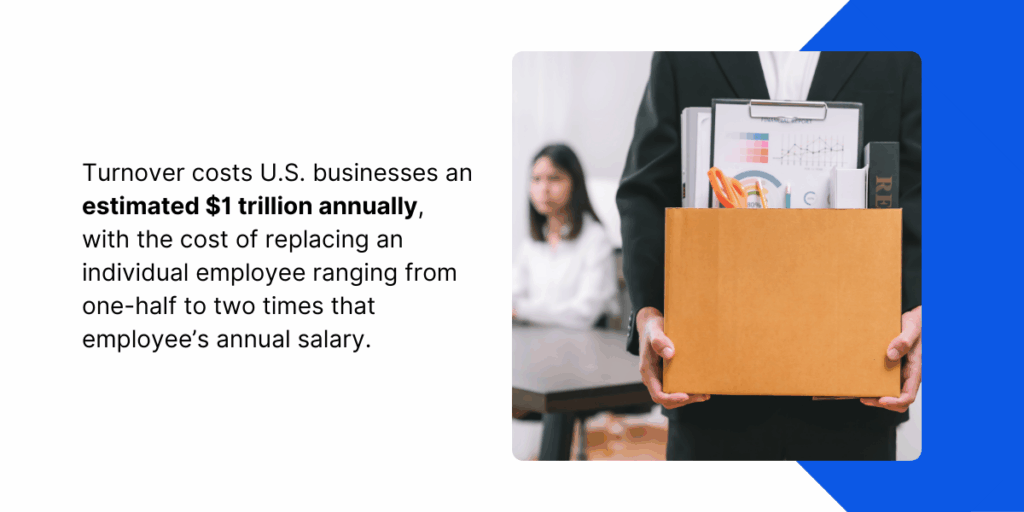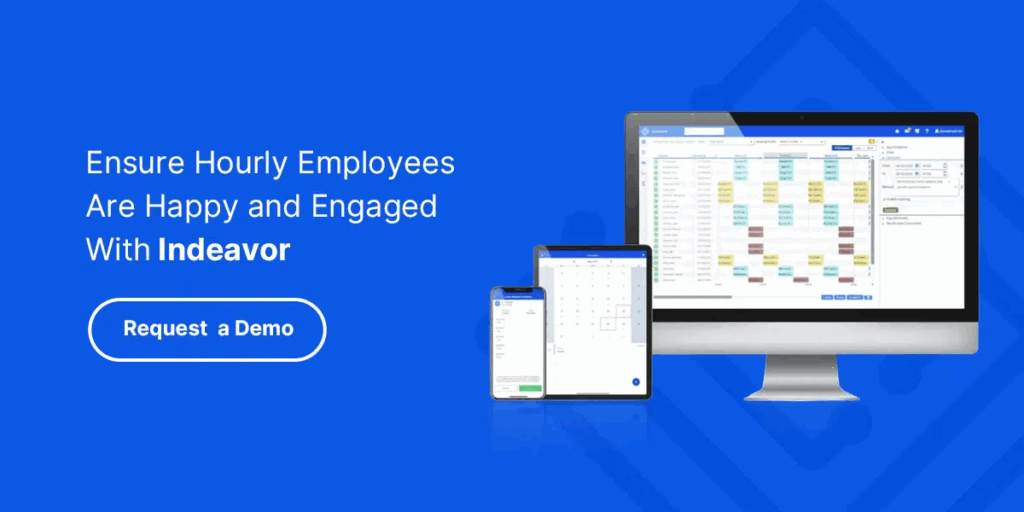Employee turnover continues to challenge businesses across industries, from manufacturing to energy and beyond. Organizations invest significant resources trying to improve retention, yet many still struggle with high churn rates.
If you’re wondering how to reduce employee turnover effectively, it’s critical to understand why common approaches fall short and what truly works to keep your workforce stable, engaged, and productive.
Why Most Turnover Strategies Fail
Many companies view turnover as simply an HR issue, something to be managed by exit interviews or hiring more recruiters. However, this narrow focus misses the operational and workforce realities behind why employees leave.
Common pitfalls in turnover strategies include:
- Lack of real-time labor data: Without visibility into scheduling, absenteeism, or shift-level trends, it’s nearly impossible to identify the root causes of turnover.
- Overreliance on perks: While perks are appreciated, they rarely fix underlying problems like unpredictable schedules, poor workload balance, or lack of advancement.
- One-size-fits-all approaches: Hourly workers, shift employees, and unionized staff each face unique challenges. Strategies must be tailored accordingly.
- Ignoring labor alignment: When employees feel mismatched to their roles or shifts, dissatisfaction grows.
Understanding these common failures is the first step in learning how to reduce employee turnover successfully.

Strategies to Reduce Employee Turnover
There is no silver bullet, but a combination of operational improvements can dramatically improve retention. Here are key strategies your organization can utilize to reduce employee turnover that Indeavor recommends based on our experience working with large, complex workforces.
Use Smart Scheduling to Improve Transparency
Scheduling chaos is one of the biggest contributors to employee dissatisfaction and turnover. When workers have little control over their hours or face frequent last-minute changes, employee stress and burnout rise.
- Automate scheduling using technology that incorporates employee preferences, seniority, and fatigue rules.
- Provide clear, advanced schedule visibility to reduce uncertainty.
- Enable fairness and equity by eliminating bias and manual errors.
21% of voluntary turnover said they would have stayed if they had more positive personal interactions with their manager. A predictable, transparent schedule builds trust and helps employees balance work with life commitments, two vital factors in reducing turnover.
Manage Absenteeism Before It Becomes Attrition
Unscheduled absences often signal that employees are struggling. Whether due to burnout, personal issues, or job dissatisfaction. Addressing absenteeism proactively is crucial.
- Implement 24/7 call-off management systems to simplify reporting and minimize supervisor burden.
- Use absence data to identify trends and intervene early.
- Support employees with flexible work options and open communication.
Proactive absence management reduces unplanned overtime and stress on remaining staff, preventing a turnover spiral.
Align Labor to Skills, Compliance, and Demand
Mismatch between employee skills and job requirements frustrates workers and increases turnover risk. Compliance with labor agreements and certifications is also essential.
- Assign employees only to roles for which they are qualified.
- Respect union contracts and legal constraints.
- Ensure fairness in job and shift assignments.
- Promote internal mobility by identifying growth opportunities.
Proper alignment fosters employee engagement and satisfaction, key retention drivers.
Leverage Workforce Insights
Data is essential to understand what is employee turnover telling you? And how can you use that to positively affect your workforce?
- Monitor turnover rates by location, shift, role, and manager.
- Track absenteeism, overtime, and other workforce metrics as leading indicators.
- Use dashboards and reports to provide real-time visibility to HR and operations.
- Inform retention plans with actionable insights, such as targeted coaching.
- Leverage data to reward and recognize employees for positive performance trends.
Research shows that 42% of employee turnover is preventable but often ignored, emphasizing the importance of leveraging workforce data to address retention proactively.
What Is the Leading Cause of Employee Turnover?
While compensation and benefits are important retention factors, research shows that most preventable employee turnover is driven by how employees are managed daily.
- Compensation-related factors (30%)
- Creating more positive personal interactions with managers (21%)
- Addressing frustrating organizational issues (13%)
- Providing opportunities for career advancement (11%)
- Improving staffing levels or workload concerns (9%)
These findings emphasize that turnover is often caused more by workforce misalignment, poor communication, and lack of inclusion than by pay alone. Addressing these management and operational factors is critical to reducing employee turnover effectively.
Reframing Retention: It’s Not Just an HR Problem
Reducing employee turnover and improving retention requires collaboration across HR, operations, and finance teams. Turnover impacts not only recruiting costs but also operational efficiency, safety, and employee morale. Supervisors must be empowered to enforce fair scheduling and absence policies, as their role is essential to creating a stable and supportive work environment.
Finance teams need to recognize that turnover can cost up to 33% of an employee’s annual salary, highlighting the importance of investing in workforce stability. Additionally, technology should act as a shared tool that promotes transparency and drives collaboration across departments. Only by sharing ownership of retention efforts can organizations truly reduce employee turnover and improve workforce stability.

Make Your Retention Strategy Work For You
Learning how to reduce employee turnover means going beyond traditional HR tactics. It requires investing in operational clarity, leveraging automation, utilizing workforce insights, and incorporating employee-centric scheduling.
Failing strategies overlook the complexity of today’s hourly and shift-based workforce. By embracing integrated solutions and cross-functional collaboration, companies can build trust, fairness, and engagement that keep employees loyal and productive.
Indeavor’s workforce management solutions empower organizations to address the root causes of turnover with real-time data, fair scheduling, and proactive absence management. To learn how Indeavor helps companies reduce turnover and improve performance, schedule a demo with our team of experts.
About the Author
Claire Pieper is the Digital Marketing Specialist for Indeavor. In her role, she specializes in crafting strategic and engaging content, ensuring that customers are well-informed. Claire is dedicated to enhancing the customer experience and optimizing the user journey through Indeavor’s solutions. To learn more or get in touch, connect with Claire on LinkedIn.



